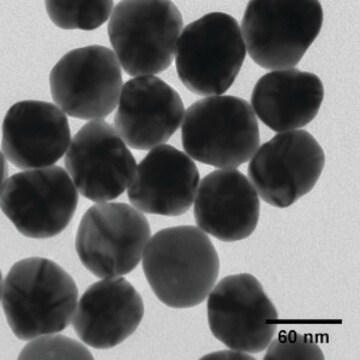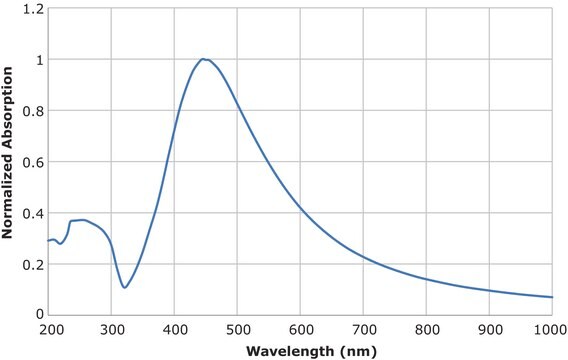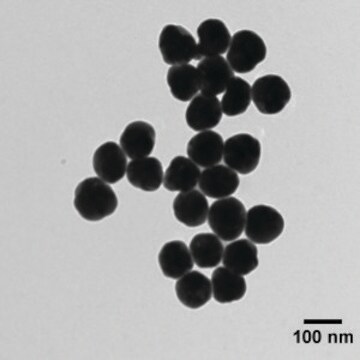736465
Silver, dispersion
nanoparticle, 30-35 wt. % in triethylene glycol monoethyl ether, spec. resistivity 11 μΩ-cm, for printing on plastic films
Synonym(s):
Silverjet DGP-40LT-15C, silver ink
About This Item
Recommended Products
Quality Level
description
surface tension 35 - 40 dyn/cm
form
dispersion
nanoparticle
concentration
30-35 wt. % in triethylene glycol monoethyl ether
refractive index
n20/D 1.333
particle size
≤50 nm
viscosity
10-18 cP
density
1.45 g/mL±0.05 g/mL at 25 °C
storage temp.
2-8°C
SMILES string
[Ag]
InChI
1S/Ag
InChI key
BQCADISMDOOEFD-UHFFFAOYSA-N
Looking for similar products? Visit Product Comparison Guide
General description
Curing Temperature: 100-150 °C
Recommended substrates: Plastic films
Recommended washing solvent: Polar Solvents: Ethyl Alcohol, IPA etc.
Application
- Enhanced Adsorption of Trace Ethylene on Ag/NZ5 Modified with Ammonia: Hierarchical Structure and Metal Dispersion Effects.: This study examines the effects of hierarchical structure and metal dispersion in enhancing the adsorption of trace ethylene using silver/nanozeolite 5 modified with ammonia, exploring potential industrial applications for improved air quality and storage conditions (Qi et al., 2024).
- Structure-Activity Relationships between the State of Silver on Different Supports and Their I(2) and CH(3)I Adsorption Properties.: The paper details the correlation between the physical state of silver dispersed on various supports and its properties in adsorbing iodine and methyl iodide, which could be crucial for developing better filtration and purification systems (Azambre et al., 2021).
- New Relevant Descriptor of Linear QNAR Models for Toxicity Assessment of Silver Nanoparticles.: This publication introduces a new quantitative nanostructure-activity relationship (QNAR) descriptor that enhances the toxicity assessment of silver nanoparticles, significant for pharmaceutical applications where safety is paramount (Kudrinskiy et al., 2020).
- Resolving the puzzle of single-atom silver dispersion on nanosized γ-Al(2)O(3) surface for high catalytic performance.: Investigates the single-atom dispersion of silver on nano-sized γ-alumina surfaces, providing insights into optimizing the catalytic efficiency and potential applications in various chemical industries (Wang et al., 2020).
Analysis Note
Legal Information
Signal Word
Warning
Hazard Statements
Precautionary Statements
Hazard Classifications
Aquatic Acute 1 - Aquatic Chronic 1
Storage Class Code
10 - Combustible liquids
WGK
WGK 3
Flash Point(F)
Not applicable
Flash Point(C)
Not applicable
Choose from one of the most recent versions:
Already Own This Product?
Find documentation for the products that you have recently purchased in the Document Library.
Customers Also Viewed
Articles
Inkjet Printing for Printed Electronics
The ability to pattern conductive electrodes is technologically relevant for several applications, including photovolatics, displays, sensors, and biomedical devices.
The emerging field of printed electronics requires a suite of functional materials for applications including flexible and large-area displays, radio frequency identification tags, portable energy harvesting and storage, biomedical and environmental sensor arrays,5,6 and logic circuits.
Recent progress in the area of solution-processed functional materials has led to the development of a variety of thin-film optoelectronic devices with significant promise in the industrial and consumer electronics fields.
Our team of scientists has experience in all areas of research including Life Science, Material Science, Chemical Synthesis, Chromatography, Analytical and many others.
Contact Technical Service










